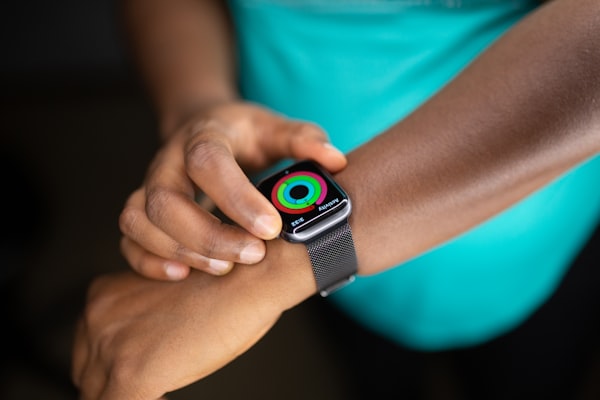Fitbit For Your Brain
One of the most anticipated progress updates this year blew our minds. Neuralink applies in prctice what's been forgotten in neuroscience for years.

You may have already heard about the progress update Neuralink held on August 28th (watch the whole thing). This will be a summary of their technology and a discussion about its implications.
Neuralink is another one of Elon Musk’s companies and it tries to solve brain and spine problems with a seamlessly implanted device. If you live long enough, any of us will have some kind of neurological disorder. They’re trying to develop an implantable device that can solve these problems.

Something similar is already available for use. That’s deep brain stimulation and has helped over 150,000 people. However, it’s not always reliable and cannot read or write high-bandwidth information. Along with some other things:

Upon seeing the demo in the Neuralink Progress Update I found the change quite dramatic. For one, the improvement in one year is huge:

Firstly, it’s not visible on the outside as it’s put in your skull under the skin. The device’s height is 6 mm compared to the skull’s 8 mm so it can hide 100%.
Secondly, their goal is to develop a fully automated robotic system to implant it. This serves a couple of purposes: the robot avoids blood vessels, it precisely installs the electrodes in the appropriate neurones and the surgery lasts only about an hour without general anaesthesia.
Thirdly, it’s reversible and upgradable. In other words, if you change your mind and decide it’s not for you, you can safely have it removed. And when an upgrade is available, it can easily be exchanged with another automated surgery.
Fourthly, it’s not just a monitor of the brain. In the future, they want to also “write” the information into the brain and solve neurological disorders in this way. It also measures parameters such as your heart rate, might be able to play music directly into your auditory cortex and is inductively charged. Some of this is already achievable, some still in development.


They also held a live demonstration showcasing 3 pigs, one without, one with the implant and one with a removed implant. They measured the brain activity in the one with the implant showing it truly works.
Twitter then exploded with ideas, discussions and comments. An interesting one was from Andrew Jackson, a Professor of Neural Interfaces, Newcastle University. This is what he had to say:
Before everyone gets too excited about the @elonmusk Neuralink demo here’s what Prof Andrew Jackson, Professor of Neural Interfaces, Newcastle University, says: “this is solid engineering but mediocre neuroscience” pic.twitter.com/R7AlLfX84R
— Rory Cellan-Jones (@ruskin147) August 30, 2020
I’m no neuroscientist, so I have to believe him. I get his point and respect it, but there are some counter-arguments to his.
- He points out the data gathered is underwhelming, as modern neuroscience is much more advanced. Well, modern neuroscience is reserved for the professionals, researchers and (probably) select patients. Neuralink makes it accessible to anyone.
- And to the point of publishing an academic paper instead of holding a live update, I think going live was a better idea. Sure they could also publish a paper, but they reached many more people with broadcasting the event live via YouTube. This is better for the public to understand and be aware of it.
- Lastly, Elon Musk then actually responded to the tweet and made an important point. What good does it make to think about ideas without bringing them to fruition? Sure the idea of “writing” to the brain and maybe even curing neurological diseases is far-fetched, but at least it’s a start. When observing Musk’s companies, it’s always this way. A vacuum tunnel for ultra-fast transportation under the ground in an earthquake-prone area such as California? Sure, it’s not safe, but it will be eventually. This is an incredibly valuable point and lesson - just start and develop, even without knowing everything and having all the technology and knowledge.
It is unfortunately common for many in academia to overweight the value of ideas & underweight bringing them to fruition. For example, the idea of going to the moon is trivial, but going to the moon is hard.
— Elon Musk (@elonmusk) August 30, 2020
As I’m touching on the “writing” part, they mentioned three requirements for this:
- Precise control of the electric field in time and space
- Wide range of current for different brain regions
- No harm to the brain over time.
Maybe this is the future of curing neurological diseases such as Alzheimer’s, depression and anxiety. Maybe tech is the way.
Currently, of course, Neuralink limits themselves to the cortical surfaces of the brain for keeping it simple. They can solve low-level processing such as motor intention, sensory and visual information etc. But in a few years, we can expect them going deeper into the brain and interacting with it to solve the above-mentioned disorders. I’m all-in for that - for solving human suffering and neurological disease.
There’s another aspect to this. We may be seeing the birth of a new platform. Just as the PC, smartphones, smartwatches and so on. Eventually, developers might be able to write apps for it, just as they do for Fitbits and Garmins. Musk appropriately said this is “a Fitbit for your brain”. Of course, this again rises challenges and issues. Security, privacy and even control often come up.
I love the technology and the fact Neuralink is pushing to develop it further. I’m just not so sure about this last part. But we’ll see.




